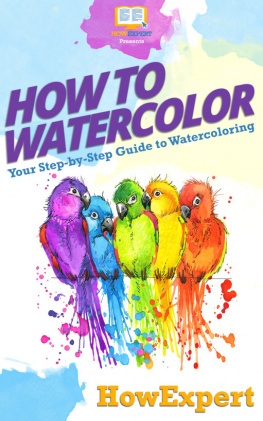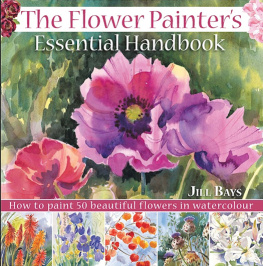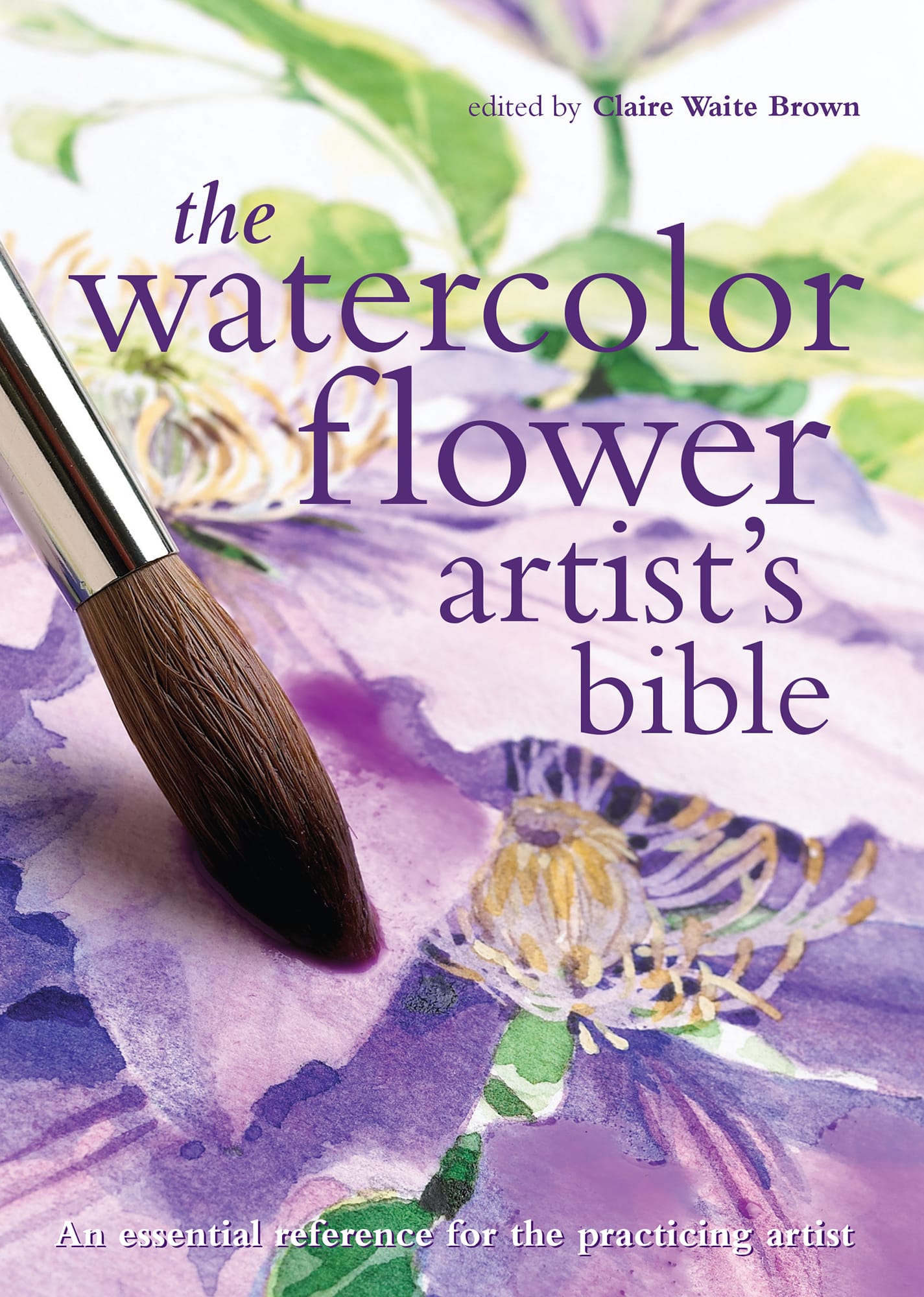the watercolor flower
artists bible
An essential reference for the practicing artist
Edited by
Claire Waite Brown


2016 Quarto Publishing Group USA Inc.
This edition published in 2016 by
CHARTWELL BOOKS
an imprint of Book Sales
a division of of Quarto Publishing Group USA Inc.
142 West 36th Street, 4th Floor
New York, New York 10018, USA
quartoknows.com
Visit our blogs at quartoknows.com
Copyright 2007 Quarto Inc.
Reprinted 2009, 2010, 2011
All rights reserved. No part of this publication may be reproduced, stored in a retrieval system, or transmitted in any form or by any means, electronic, mechanical, photocopying, recording, or otherwise, without the permission of the copyright holder.
ISBN-10: 0-7858-2281-X
ISBN-13: 978-0-7858-2281-3
QUAR.FPBI
This book was designed and produced by
Quarto Inc.
The Old Brewery
6 Blundell Street
London N7 9BH, UK
Project Editor: Donna Gregory
Art Editor and Designer: Jill Mumford
Picture Researcher: Claudia Tate
Assistant Art Director: Caroline Guest
Managing Art Editor: Anna Plucinska
Art Director: Moira Clinch
Publisher: Paul Carslake
Digital edition: 978-1-61058-378-7
Softcover edition: 978-0-78582-281-3
Picture credit on frontis: Nancy Meadows Taylor
Contents
Guide
Introduction

Learn about light and shadow.
Anyone who has drawn or painted flowers will have discovered how challenging it is to capture their color and beauty. A successful flower painting should depict the essence of the flowerits shape, texture, and coloras well as intangible qualities such as freshness and scent. Some try to pin down the spirit of a flower in formal botanical paintings, while others aim to express ephemeral spirit through more expressionistic line and color.
Watercolor is the perfect choice of medium for rendering the beauty and fragility of flowers and their vivid or delicate colors, and the aim of this book is to show you how to paint a wide variety of flowers in detail, using a range of different watercolor techniques and paint mixes.
The opening section of the book looks at the tools and materials required for flower painting and illustrates the basic watercolor techniques.
You will also find here some special techniques that will help you to capture various vital characteristics of flowers and plants.
The next section categorizes flowers into a series of basic shapes, with a description of each flower type, and drawings and examples examining principles of perspective and the patterns of light and shadow comprising the three-dimensional form.
The directory of flowers is an invaluable source of inspiration that shows you how to paint a vast collection of flowers, and some leaves and berries, employing a wide variety of techniques. Each flower is painted as a sequence of steps, followed by the completed painting, with captions that describe the colors used, the color mixes required, and the techniques involved. Watercolor flower painting takes practice, and the flowers themselves are not always easy to portray, because the intricate shapes can appear bewildering until you learn to break them down to their simplest form.
Discover how to break flowers down into simple shapes.
Within the directory section, you will also find examples of the work of other artists, since looking at their work can provide invaluable inspiration for the aspiring flower artist.
One of the great attractions of flower painting is that it gives you so much freedom, and this book will help you to see some of the possibilities.
Developing skills is important, but what matters even more is that you take pleasure in what you do, and with The Watercolor Flower Artists Bible you will soon find yourself painting flowers in watercolor with confidence and enjoyment.
Experiment with color and brushstrokes.
Be inspired by the work of other artists.
Chapter One
Materials and techniques
Thankfully, when it comes to painting beautiful flowers in watercolor you dont need a vast quantity of materials and equipment, and in the following pages you will find information and advice to help you choose what you need. This section also focuses on the methods of work that are most useful to the flower artist, from simple washes to composing the final piece.
About paints
The delicacy and translucency of watercolor makes it an ideal medium for flower painting. The paint itself can be bought as liquid, ready-to-use color in tubes, or in square pans of dry color that needs mixing with water. It is also made in two different qualities, usually referred to as artists or students colors. The latter are the cheaper option, but they contain less pure pigment than artists quality paints, which means that the colors are not as intense. They are also usually less transparent, more grainy, and not as reliably lightfast as the more expensive artists varieties. Therefore, it is advisable to buy the more expensive paints, because for flower colors in particular you do not want to struggle with muddy or grainy pigments.
Useful mediums
Since water is the primary medium for watercolor work, you do not strictly need anything else. However, you may, on occasion, choose to use a few drops of ox gall (3) in the water to help the paint flow smoothly, or mix gum arabic (2) with watercolor on the palette to give the paint extra body without affecting its transparency. Masking fluid (1) is a medium that can be painted onto the paper in order to reserve fine highlights, such as on stamens and anthers.





















